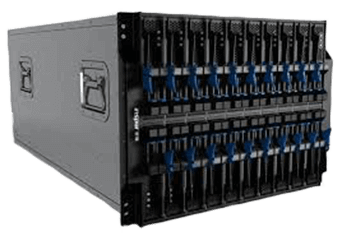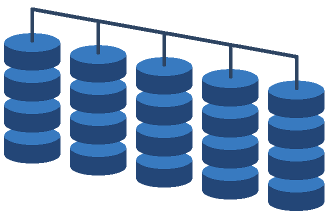RAID is a thing that is becoming more and more common in the digital storage industry in most RAID instances data written across all volumes in stripes and that means you get improves read and write speeds also as multiple drives are being accessed at the same time. Avoid data loss disaster you need to get data recovery done on an urgent basis and also need to safeguard the data while giving it to any recovery agency. RAID 0 data recovery is the absolute raid data recovery system
RAID is nothing but an array of independent disk or array of inexpensive disk to configure an array we use a set of physical drives so that raid allows you to have group of physical disk which provides you one logical disk, for example, you have a two disks which are having a data so all these two disks will be separate individual physical disk so in array we use an array of disk for example we are using many disks multiple i/o request can be handled in a parallel if the data required to separate the disk, for example, you have a separate disk for 2tb and another disk is also 2tb it’s a multiple i/o request it can be access to RAID parallel of data communication in separate disk that is helpful in this RAID concept.
Advantages of RAID:
Data loss will be very dangerous in the organization while using the RAID concept we can reduce the data loss RAID technology provides data loss prevention due to loss of failure RAID technology can provide in hardware and software you can have storage in hardware, or we can use to implement in software
RAID 0:
It is all about speed and it contributes nothing to reliability minimum two disks required for implementing RAID 0, for example, we have a data can be stored when data will be accessing the reliability performance is zero in this the units will be separated in blocks and RAIDS across the number of disks.
RAID 1:

This level is known as mirroring it copies two disks simultaneously the data placed in multiple disks it is also called as data mirroring it automatic data backup as there will be duplication of data and no loss data at any point read request executed in either of the two disks written request to both disk will be updated in parallel recovery from failure will be that simple if one drive fails you just have the data access from the second drive.
RAID 10:
It is combining RAID 0 and RAID 1 which offers high performance than RAID 1 but much higher cost it involved data is organized stripes across multiple disks and then striped disk set is mirrored data is mirrored and the mirrors are striped
Disadvantages of RAID:
The main disadvantage in RAID is cost.
Conclusion:
RAID recovery is used to recover lost data. Storage is another part of fault tolerance if something were to happen to a company data such as disk failure there is the possibility in data loss then that could cause a grave impact on the companies performance and hence it is better to make sure that if a disk does fail, that no data loss would occur

